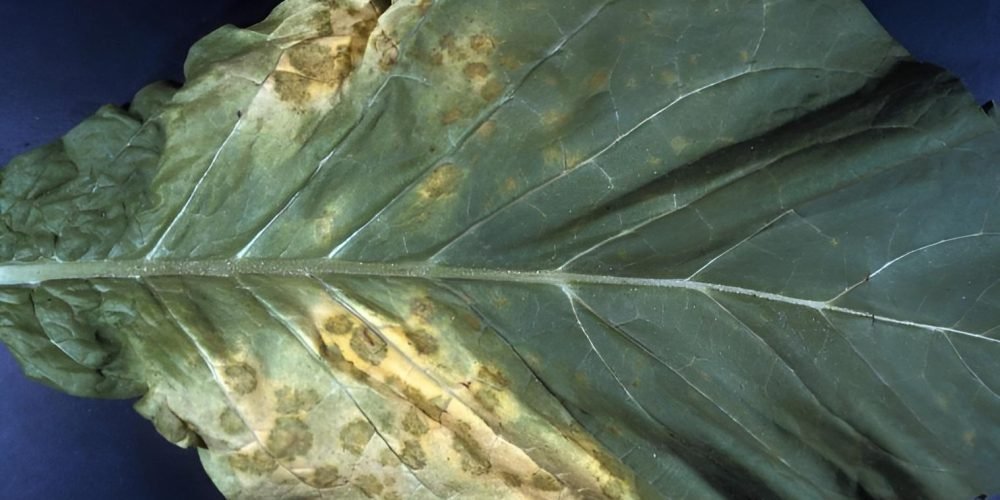Tobacco downy mildew (blue mold)
- The scientific name : Downy mildew of tobacco
- The type of disease: Innate
- The causative fungus : Peronospora tabacina Adam
- Symptoms of downy mildew on tobacco (blue mold):
- In the nursery, symptoms appear on seedlings bearing leaves 2-4 cm long in the form of clear, circular yellow spots on the upper surface of the leaves, offset by white, blue-violet, fuzzy growths on the lower surface. Figure
- Older seedling leaves appear wrinkled, distorted, often cup-shaped, dark in color, and may have dead areas.
- Affected plants are usually stunted
- In the field :
- The infection usually begins on the lower leaves, as circular yellow spots appear on the upper surface, which are offset on the lower surface by white, blue-purple fuzz. As the infection progresses, the spots expand and the leaves dry out and take on a blackish color.
- The infection causes young plants to be severely stunted, and the leaves become narrow, short, and clearly mottled.
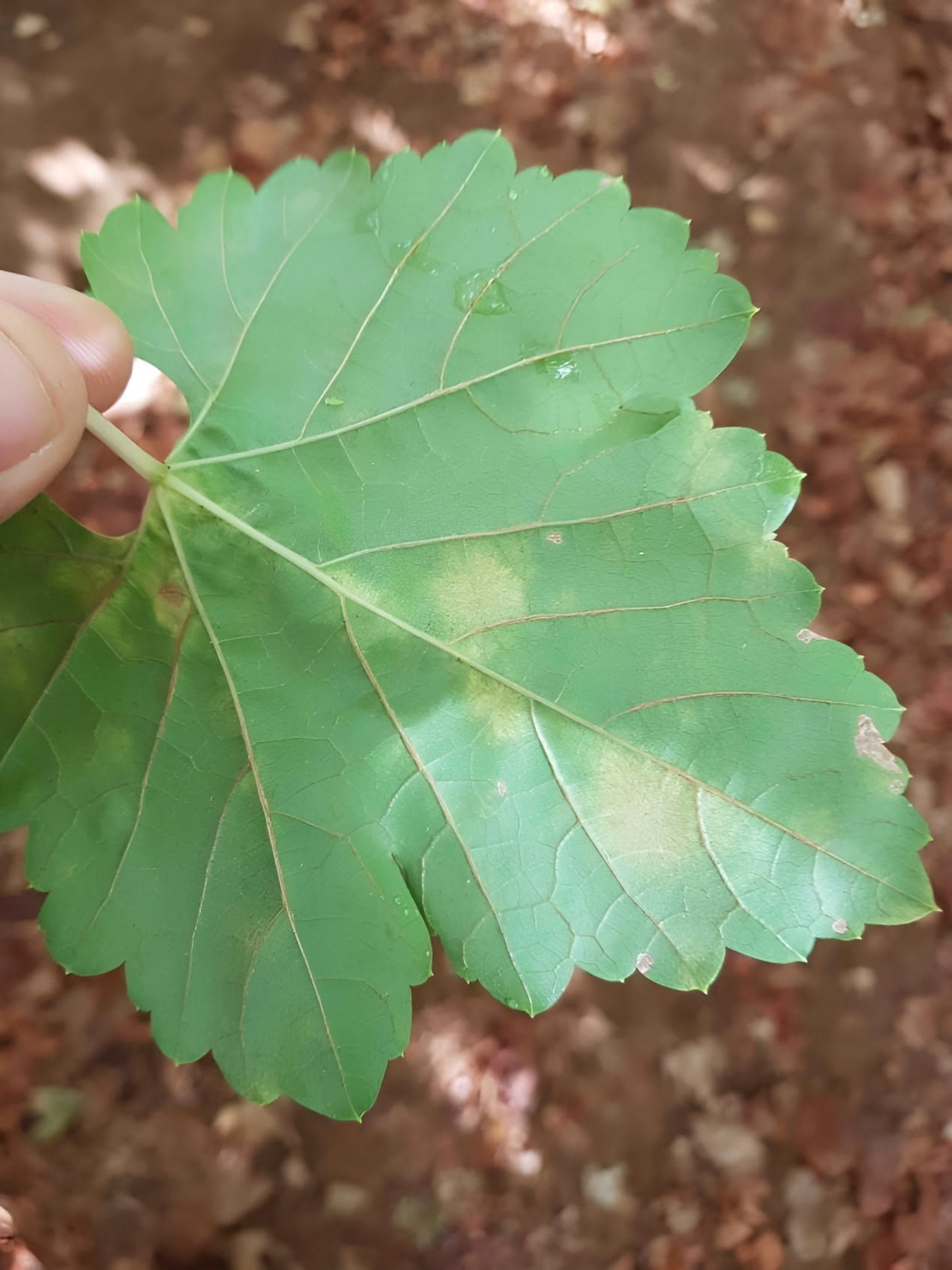
-A picture showing you the beginning of the infection with downy mildew on tobacco (blue mold).
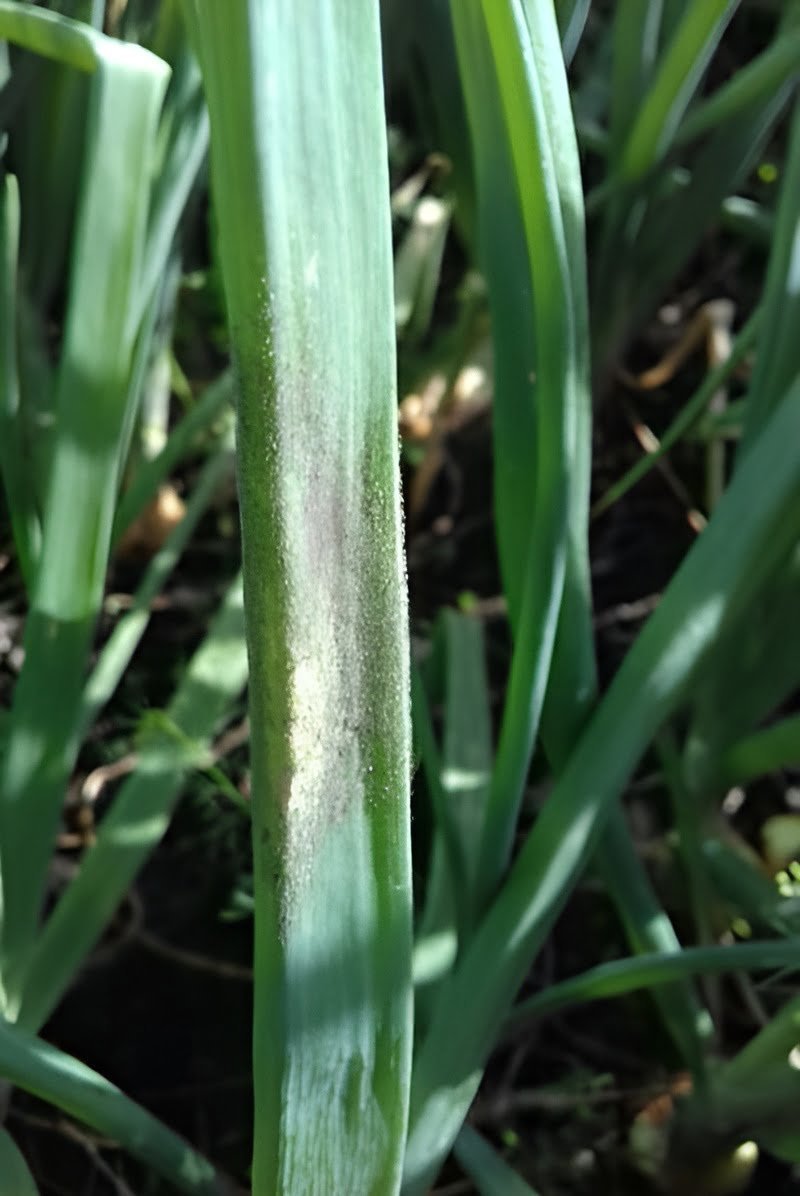
-A picture showing the symptoms of infection on the stem (on onion plants, where the fungus has many hosts: onions, tomatoes, eggplants, and tobacco).
-A picture showing the symptoms of a moderate injury.
- Causes of downy mildew on tobacco (blue mold):
Symptoms: Symptoms of infection vary depending on the age of the plant and the time of infection
- Rain and wind, through which the infection is transmitted.
- Lack of ventilation
- Increase nitrogen fertilization
– Climatic conditions (high humidity and moderate temperature)
- The presence of harmful weeds in the field.
- Not disposing of crop residues.
- Suitable conditions for the spread of downy mildew on tobacco (blue mold):
- The spread of infection is suitable for low to moderate temperatures between 18 and 25 degrees Celsius, and a high relative humidity of no less than 80%.
- Development cycle of downy mildew on tobacco (blue mold):
- The infection is transmitted during the season from one plant to another, and from one field to another, through conidial spores that germinate when a film of water is present on the surface of the leaves, creating a germination tube that penetrates the leaf tissue and branches between the cells.
- In wet and cold weather, sporophores carrying conidial spores emerge on the lower surface of the leaves. Under appropriate conditions, the fungus forms about a million spores per square centimeter of the surface of the infected leaf. Spores usually form at night
- They mature at dawn, and spread during the morning, being carried by wind or rain spray, causing new infections.
- The asexual life cycle, from spore germination, infection, and formation of new spores, takes about 10 days and can be repeated several times during the host's growing season.
- In the advanced stages, oospores form on the tissues of dead infected plants. They resist unsuitable environmental conditions and can remain in the soil and on crop residues for a year or more.
- Losses of disease spread
In case of severe infection, the stems and roots also become infected and take on a brown color. The weakness of the stems can lead to the infected plants falling to the ground.
- In severe infections, the leaves fall before they reach full growth
The result is low weight and poor quality of the crop.
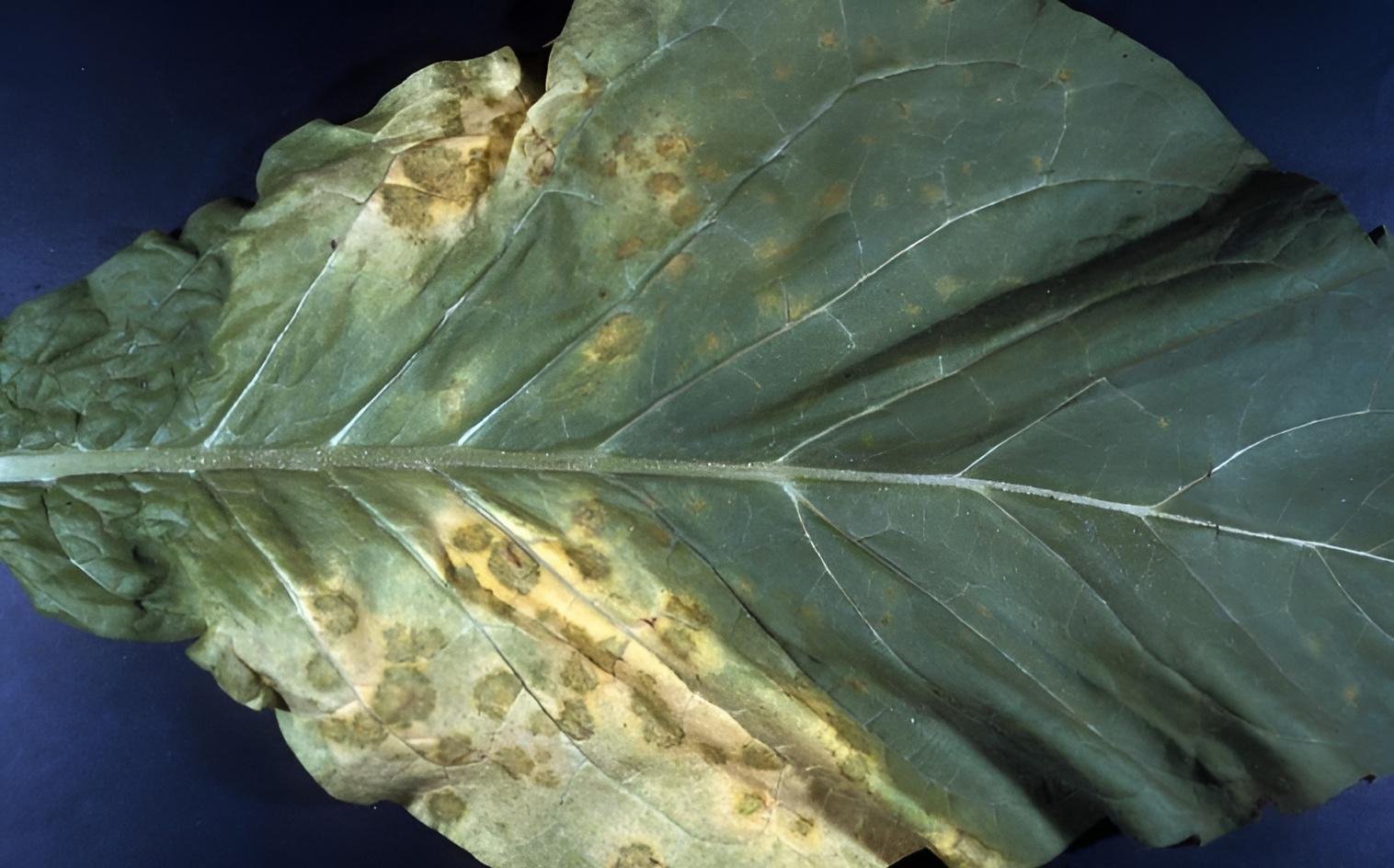
-A picture showing the symptoms of a severe infection.
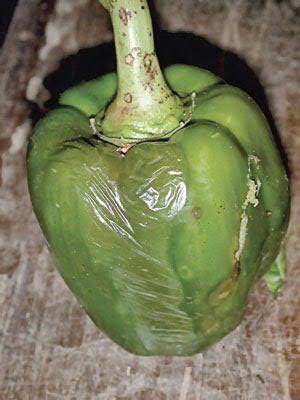
-A picture showing the symptoms of infection on the fruit.
- Control strategy against tobacco downy mildew (blue mold)
- Preventive measures to prevent downy mildew on tobacco
– Avoid establishing nurseries in places where water accumulates, and it is preferable to establish them in new locations every year if possible, or sterilize them with hot steam, or using chemicals (Vapam, chlorine, methyl bromide picrin, etc.).
– Getting rid of crop waste that could be a source of infection
– Avoid dense planting to reduce humidity around plants
– Watering early in the day so that the leaves dry before night.
- Removing harmful weeds inside the fields and on their edges to get rid of plants that could be a source of transmission of infection to crops.
- Practice the agricultural cycle.
- Regularly measure the humidity level in greenhouses with crops.
- Nitrogen fertilization.
- Chemical and organic control recommendations
- Organic control: destroying infected seedlings as soon as they appear in the nursery to prevent the spread of the infection to other healthy plants, and disposing of the remaining seedlings in the nursery after transferring the necessary ones, by burying them in the soil.
- Use healthy seeds, or treat them before planting with an appropriate fungicide.
- Chemical control: Seedlings in the nursery can be protected from infection in infested areas by spraying them with a fungicide such as mancozeb and metalaxyl at the fourth leaf stage. Spraying is repeated every 7-10 days, and the last spray is 1-2 days before planting.
- References
- Gisi, U. (2002). Chemical control of downy mildews. Advances in downy mildew research, 119-159
- Clayton, E. E., & Gaines, J. G. (1939). Blue mold (downy mildew) disease of tobacco (No. 1799). US Government Printing Office
- Anderson, P. J. (1940). Control of downy mildew (on Tobacco seedlings). Bulletin. Connecticut Agricultural Experiment Station, 433, 193-206
- CLAYTON, Edward Eastman; GAINES, John Gordon. Downy mildew of tobacco. US Department of Agriculture, 1933
Links:
https://link.springer.com/content/pdf/10.1007/0-306-47914-1.pdf#page=124



